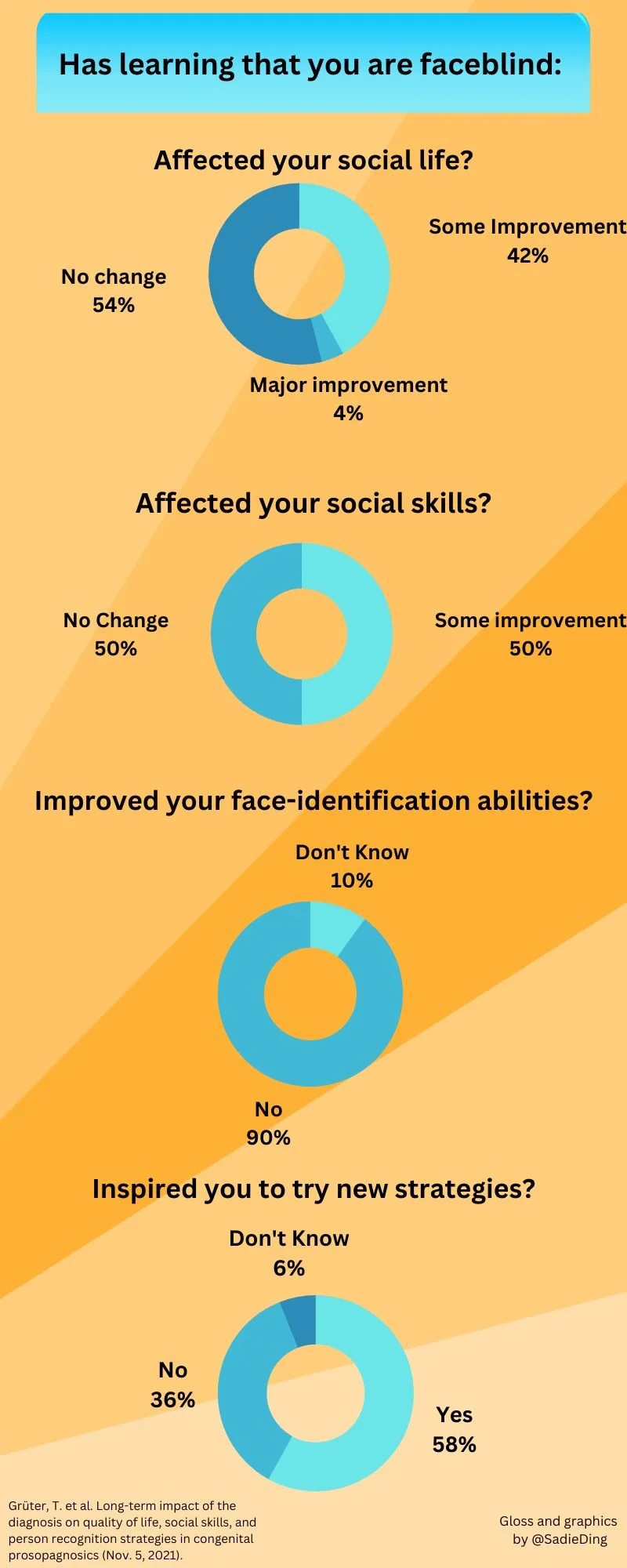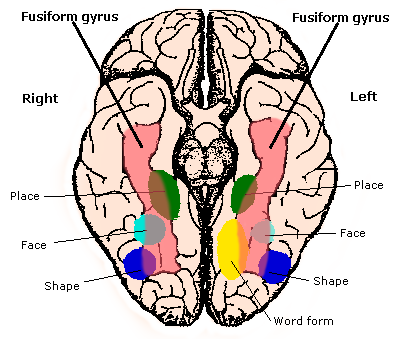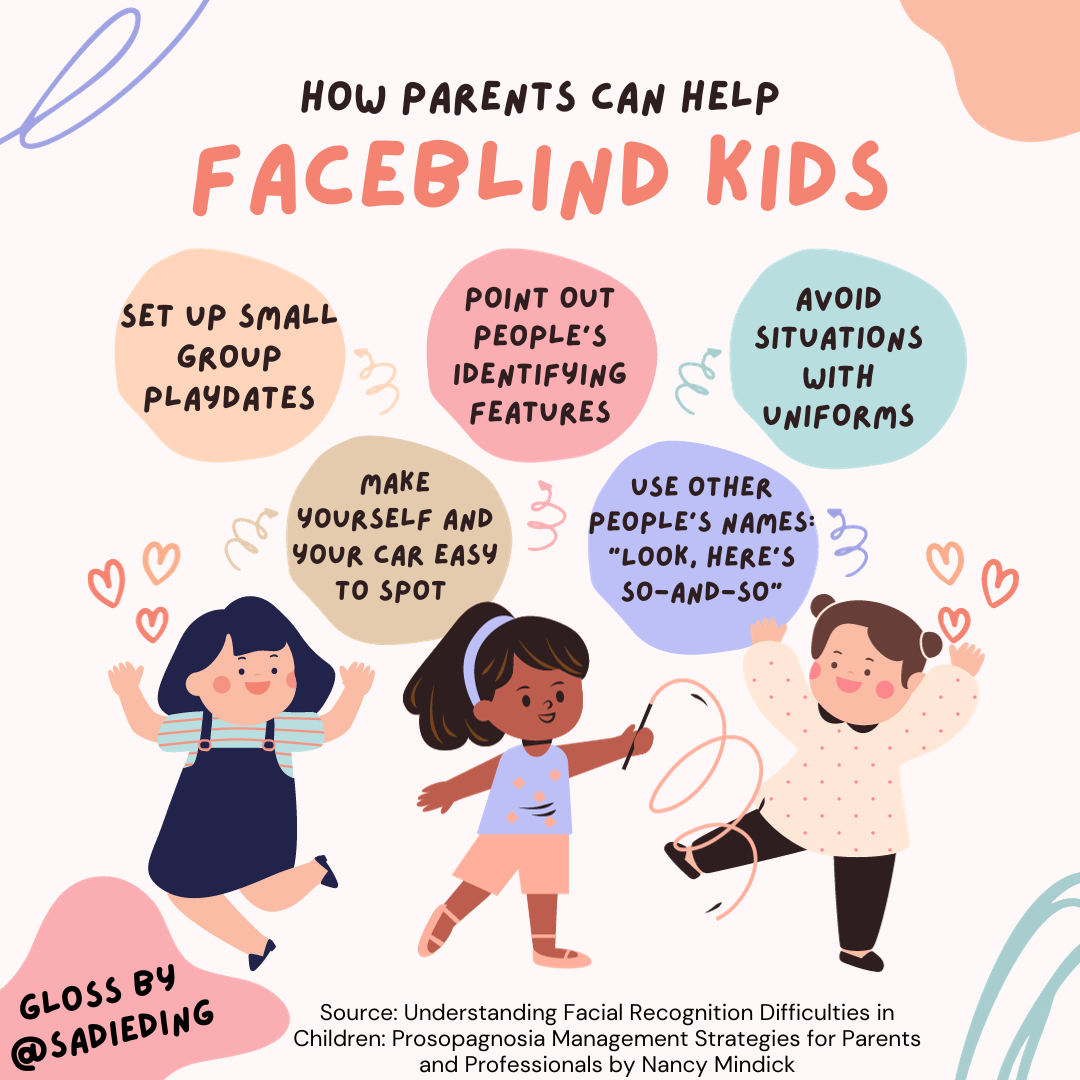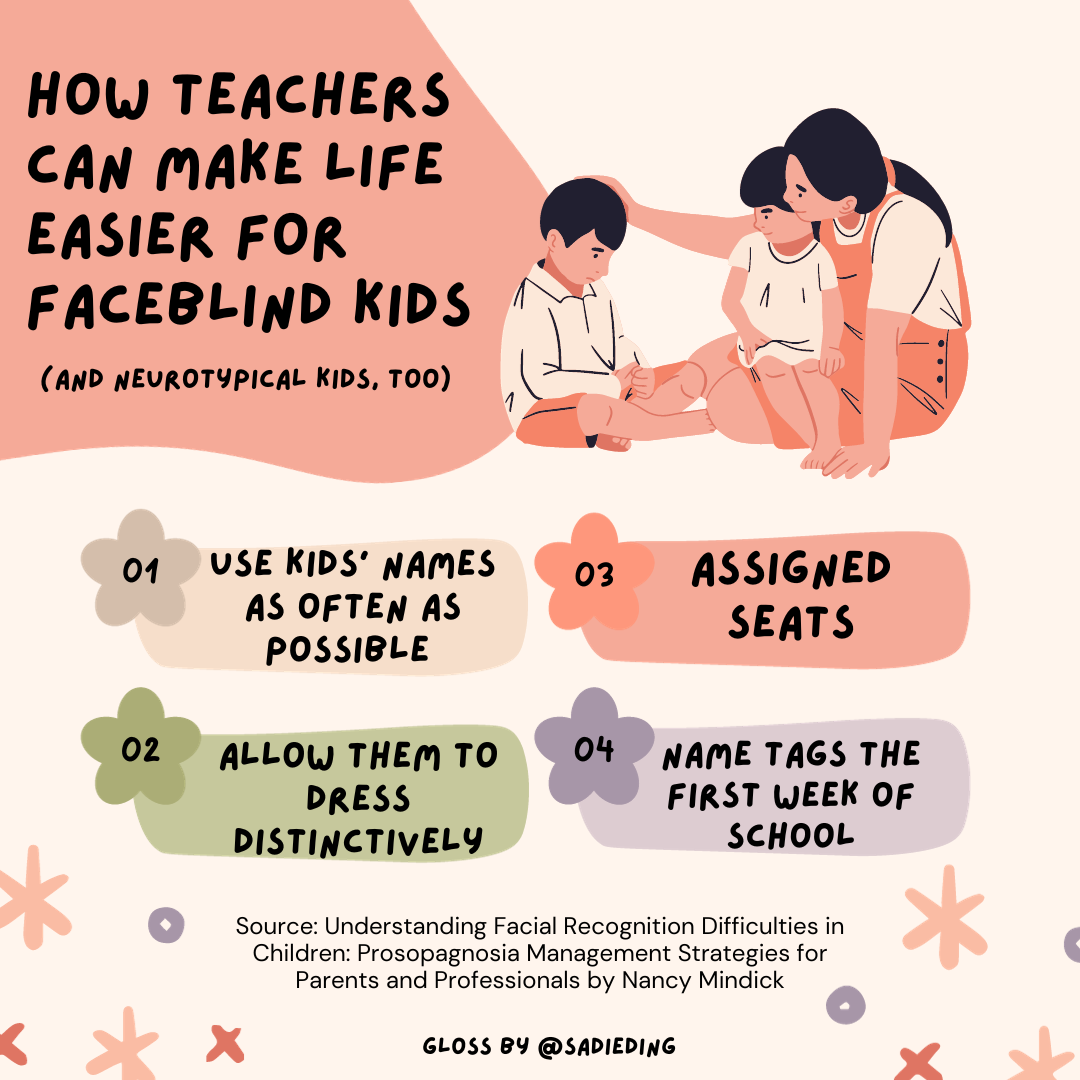Prosopagnosia (Faceblindness) FAQ
Why can’t you see faces?
People who are faceblind can see faces just as clearly and sharply as you can. We just can’t tell them apart. It’s sort of like being colorblind — colorblind folks don’t see colors as empty voids or blurry patches, they just can’t tell certain colors apart,
To see a face a little like a faceblind person, just turn a picture of a well-known celebrity upside down. The features are just as clear as ever, and yet, they don’t hang together quite like they usually do. You may even have trouble identifying them. This is the so-called inversion effect, and vision scientists are obsessed with it.
Oh, I think I have that. I am terrible at remembering names…
Just stop right there, buck-o! I’d love to have the experience of forgetting someone’s name. Because that would mean that I, at least, have some idea who the person is and maybe even where I know them from.
If you recognize someone’s face but you just can’t recall their name, you are not faceblind. You are completely normal. Humans evolved to roam around in small hunter-gatherer tribes; we only had to remember about 100 people in our entire lives. Modern humans are expected to remember many times that number, and so we always feel like we are falling short.
How do I get a prosopagnosia diagnosis?
You can’t. Faceblindness is not currently an official diagnosis in the DSM or ICD. However, if you’re just curious, take the Cambridge Face Memory Test online.
What is the point of learning that you’re faceblind, if there’s nothing you can do about it?
Balancing the benefits of self-knowledge with potential distress depends on the person. However, most prosopagnosiacs say they are relieved to finally understand the cause of their social difficulties.
Why can’t you tell faces apart?
Faces really do look basically the same. Everyone has two eyes above a nose, above a mouth. And yet, if you meet someone at a party, you will probably be able to recognize that person on the street the next day. You may not recall their name, but you will remember their face, right? That is pretty impressive! Do you think you could do that with a chair or a rock?
The reason you can do this is because you were born with two olive-sized chunks of brain specifically devoted to recognizing faces called the fusiform face area (FFA). They are located above your ears.
Faceblind people don’t have a FFA?
If you damage your FFA due to a brain injury, you will become faceblind. However, most people who are faceblind have never experienced any kind of brain damage. Indeed, our FFAs appear basically normal, as far as current technology can tell. They are just not very good at their jobs.
Is there a treatment?
Not yet, but people are working on it!
How can I make life easier for my faceblind kid?
Use people’s names constantly, and encourage his/her teacher to do the same. (“Oh look, there’s your friend Dani from softball…”)
Organize playdates with just one or two friends.
Avoid sports and schools that require uniforms.
Make yourself and your car easy to identify — e.g. by putting reindeer antlers on your car, or by wearing zany eyeglasses.
To the extent it’s developmentally appropriate, engage your kid in conversation about what they are good and not so good at, and brainstorm solutions to common problems.
Practice socially graceful ways to ask people to identify themselves. (e.g. I’m sorry, I’m not very good at remembering faces, can you remind me of your name again?)
Where can I find other faceblind folks to commiserate with?





